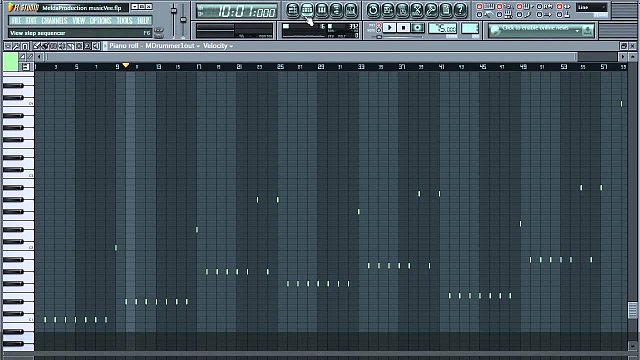
- #Mulab 7 set input source upgrade
- #Mulab 7 set input source full
- #Mulab 7 set input source code
- #Mulab 7 set input source free
The ‘Mulab’ and ‘project’ buttons in the top left provide the main menu / settings options. This is what the GUI looks like using one of the demo songs. There are also a number of audio generators, audio processors, event generators and event processors. Similarly effects include chorus, distortion, filters, delay, reverb, flangers and experimental units. The instruments cover a very wide range including bass, leads, pads, sequences, organs, soundscapes. There are a number of devices – MuDrum, MuSynth, MuPad, MuSampla and MultiSampla as well as MuEcho and MuVerb which are very good echo and reverb effects. The factory content is also very impressive.
#Mulab 7 set input source upgrade
Another useful feature when you upgrade versions is that you can copy your user folder to retain your user settings and files. If you have a lot of VSTs like me it can take some time to scan them all but then any subsequent additions can be done very easily by scanning a single file or folder. It is still intuitive to use and setting up the audio and scanning VSTs is the same straightforward process.

The GUI is familiar but the updated fonts and design give a more modern look and feel. What’s impressive is that with all of the updates that have occurred, users of MuLab 6 will still feel at home with the latest version.
#Mulab 7 set input source full
Full details and terms and conditions can be found here. However, if you can create a great demo song (conditions apply, for instance no VSTs allowed) you could win a MuLab and MUX Modular plugin licence.
#Mulab 7 set input source free
The free version is limited to 4 tracks and 8 VSTs. The good news is that a free version is also available and it is recommended that you try this first to ensure that MuLab meets your needs. The permanent key is then emailed once the order has been manually processed which is normally within 1 – 2 working days. One point to note is that when you purchase the full version, you will be granted an initial user key so that you can use MuLab straight away. Upgrades are also available at a discounted price. Essentially you would only need to purchase a separate MUX licence if you are likely to run MuLab in other DAWs. You can also purchase both together for 99 Euros. You can purchase the MUX modular system separately as a plugin for 59 Euros and this allows you to use MuLab in other DAWs. There are a number of different purchase options, a new MuLab licence costs 69 Euros which includes an integrated MUX modular system. These are all listed on the change log page should you require any further information.

Version 7.2 included a grain player along with a number of improvements and bug fixes which have continued up to the latest version.
#Mulab 7 set input source code
Version 7.1 was essentially a re-write of the MacOS code along with a number of improvements and fixes. To try and summarise these, version 7 brought improved sound easier audio recording improved audio marking improved support for streaming files with different sample rates a step sequencer new modules including audio rate modulation, sample and hold, parameter randomisation (also works on VSTs), pitch bend enhanced racks user definable grids swing parameter improved piano roll. There have been a myriad of updates and improvements since the original review. As you’d expect it will run more efficiently and with a lower CPU load with a higher spec machine but many modern synths and effects have complex architecture using a lot of maths and calculations and so require multi-core processors and their performance will be limited by your system rather than MuLab. A minimum resolution of 1024 x 768 and powerful multi-core are recommended but not necessary although it is an important point when considering how you will use MuLab. System requirements are not too demanding – Windows XP and above, MacOS 10.6.8 and above a decent soundcard / driver. The latest version is 7.2.23 and is available for Windows (32 & 64 bit) and Mac (64 bit). So a review for MuLab 7 which was released in May 2016 is somewhat overdue. It’s been nearly two years since I reviewed MuLab 6 which you can read about here.


 0 kommentar(er)
0 kommentar(er)
